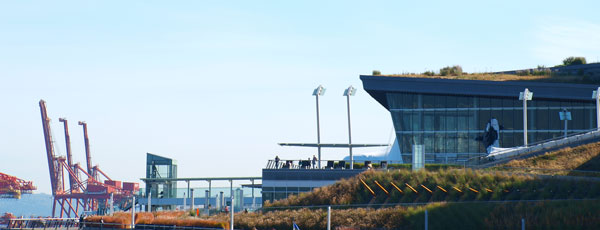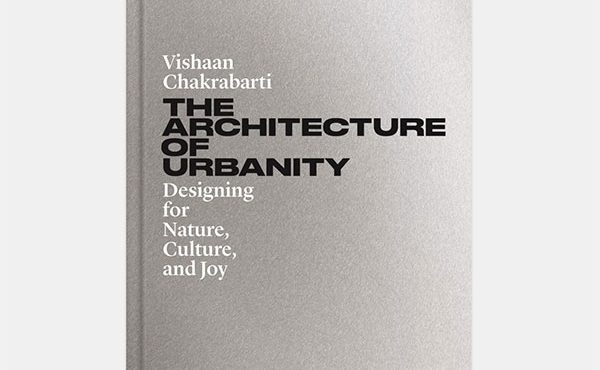
Green, or living roofs, are becoming more and more popular in cities as a result of the many benefits they can provide. These include mitigating and retaining stormwater runoff, mediating the heat island effect, improving air quality, reducing noise pollution, increasing real estate value, insulating buildings for greater energy efficiency, increasing roof durability, providing greater biodiversity in city centers, and, of course, adding aesthetic amenity to the concrete jungle.
These benefits are becoming so well known that some cities in North America have developed green roof policies that either require or reward the application of green roofs to both new and existing buildings. Toronto, Chicago, and Portland are all examples of cities that have recently developed incentive programs to encourage the inclusion of green roofs in their cities. As has been demonstrated with Toronto’s Green Roof Policy (White), these attempts to regulate the use of green roofs have been met with varying degrees of success.
Although green roof policies are relatively new, green roofs themselves are by no means a recent phenomena. They have been used for centuries to provide insulation, aesthetic appeal, and additional green space to building projects. They are, however, becoming increasingly important as global trends move towards greater urbanization and increased population density. Under these conditions, green roofs can be used to serve many of the functions that have traditionally been satisfied by open spaces in urban areas. That being said, the costs and risks associated with green roofs continue to outweigh the realized benefit in many cases.
In the spring of 2012, a seminar group of students in the Master of Landscape Architecture program at UBC set out to determine where and why green roofs continue to fall short of achieving their greater promise. Led by Professor Daniel Roehr, founder of the greenskins lab and project architect of the award winning Daimler-Chrysler Green Roof Project at Potsdamer Platz in Berlin, this exploration involved an in-depth look at global and local knowledge to inform more effective ways to design and implement living roofs.
The hyperlinks throughout this page access summary papers of the individual studies that were derived from this seminar. They cover topics ranging from the conceptual and detailed design of green roofs to the development of a city-wide green roof policy, and they focus in on possible design solutions for the Vancouver context.
Examining the Details
Prior projects and academic research can be excellent sources of information for detail design. When dealing with sensitive landscapes such as green roofs, these sources of information can be especially pertinent in designing for both enhanced function and efficient maintenance. Through examining the details of previously successful green roof projects, the secrets to success in the green roof implementation process can be revealed as Simple Solutions for Complex Landscapes (Borslein), and conclusions can be drawn about treating Green Roofs as Layer Cake (Peters) as a means of finding design solutions that function on many levels to serve the needs of modern cities.
Both local and gobal academic research can be used to inform the technical decisions regarding green roof materials and configurations. In bringing together Green Roof Research Models (McAuley) from around the world, and Applying Green Roof Research to Detail Design Decisions (Schneider), we can ensure greater green roof success rates from the practical application of scientific study.
Exploring the Vancouver Context
One of the overarching themes that emerged from our collective research on green roofs was that design decisions need to be made based on place-specific climatic conditions. In climate zones where rainfall and temperatures are more consistent across seasons, green roofs tend to thrive on their own; however, in climates like Vancouver’s where rain is overly abundant in the winter months and drought is common in the summer months, green roofs often need to be supported by additional drainage and irrigation systems.
Looking at specific neighbourhoods in Vancouver’s downtown, case studies have been conducted to suggest how Neighbourhood Stormwater Storage Space (Holy) might be used to retain, filter and reuse water for green roof irrigation, how retrofitting existing ground-level green roofs in Coal Harbour can demonstrate the principle of Growing Greener Roofs with Less Potable Water (Baker), how Combining Stormwater Infrastructure (Radford & Vernon) can result in more effective mitigation of stormwater runoff than green roofs alone, and how designing for synergies between building, context, climate, and use can result in more Productive Green Roofs (Basilij).
***
The reports were edited and compiled by Pietra Basilij with contributions from: Alissa Baker, Pietra Basilij, Daniel Borslein, Lukas Holy, Paul Peters, Terence Radford, Daniel Roehr, Nicole Schneider, Ariel Vernon, & Tatiana White.
**
Pietra Basilij is an urban exploration enthusiast who is passionate about community development and testing the public realm. She is a recent graduate from the Master of Landscape Architecture program at UBC with a background in business and literature.





One comment
I like the idea of green roofs. I mean, if we build more cities and we keep building even higher buildings, our normal gardens will get so far away from us that we will need a great replacement like this one. I don’t really want that to happen, of course, but if it did, this is how we would preserve the green in the cities. What I don’t like is how these green roofs are maintained. I often see them flooded and muddy. It’s a great feeling standing on the top of a skyscraper surrounded by plants and grass, but it’s definitely not a great experience to be standing there in a puddle of mud.